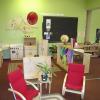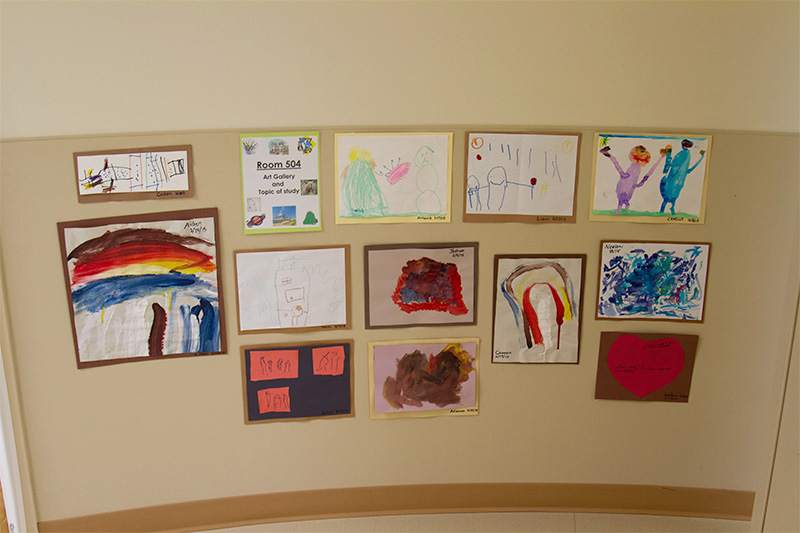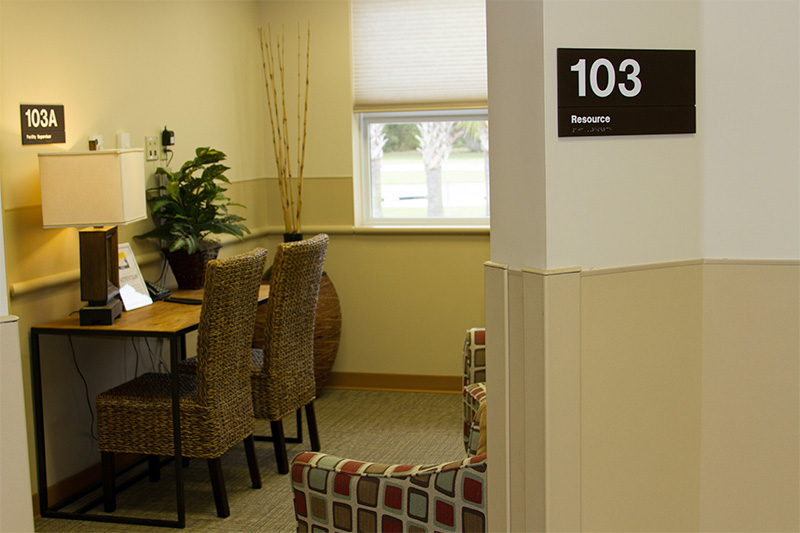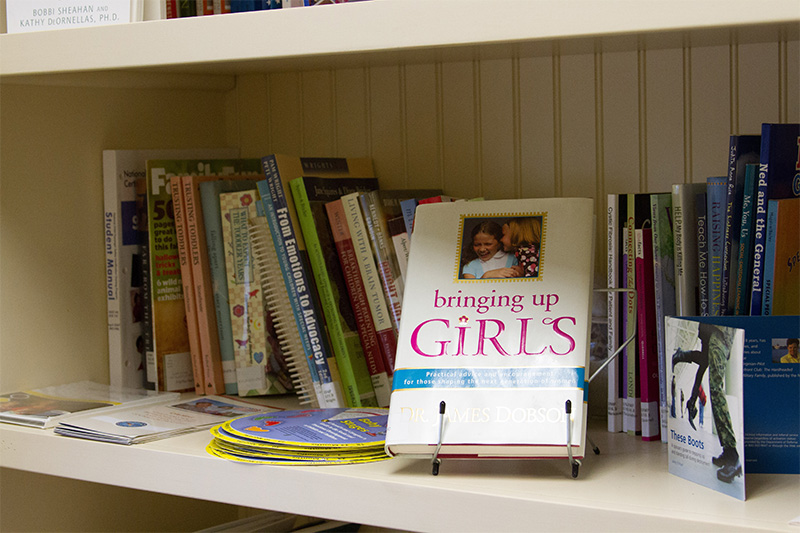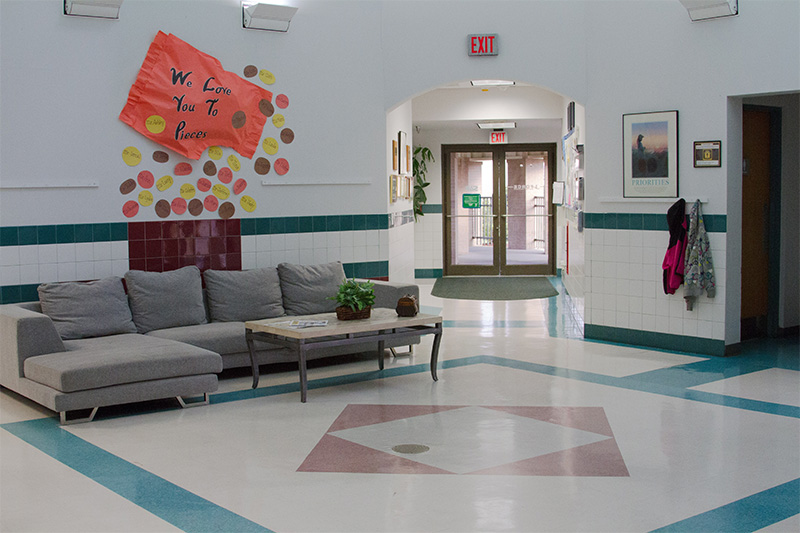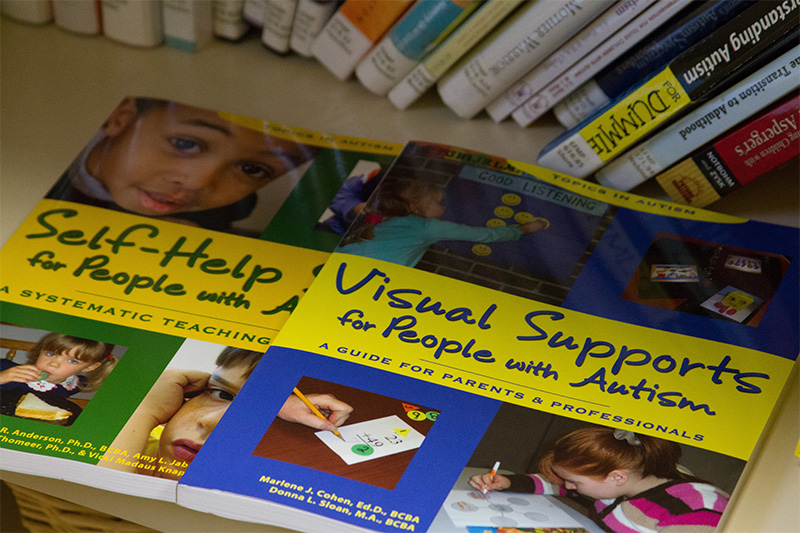- Recognize developmentally appropriate environmental designs for learning.
- Model how to design effective environments in shared spaces.
- Ensure that the physical facility supports staff members’ construction of high-quality environments and that staff members have the resources they need.
Learn
Know
What messages do you want your environment to send? How do you want staff members, children, and families to feel while they are in your program space? What do you want them to learn?
There are several things to consider as you work with trainers and coaches to support staff members in designing or redesigning their classroom or program spaces. First, in conjunction with trainers and coaches, you should contribute your expertise on high-quality environments. You must know what a high-quality learning environment looks like for infants, toddlers, preschoolers, or school-age children and youth. You can read the age-specific Virtual Lab School Learning Environment courses for a review. These lessons stress the importance of the physical environment and how it contributes to children’s learning. The lessons emphasize the messages different environments can send to children, youth, and adults, and how arrangement of the environment can hinder or facilitate staff members’ work with children and families. The lessons include information on developing and communicating predictable schedules and routines. The lessons also provide information on building indoor and outdoor environments that are:
- Designed to support the interests and development of children and youth (including information on relevant interest or activity areas that could be included based on children’s ages)
- Organized to support engagement, autonomy, and learning
- Full of materials that are developmentally appropriate, culturally relevant, open-ended (i.e., materials that can be used in a variety of ways), and that support a variety of learning goals for children or youth
- Simultaneously engaging, with interesting experiences, and calming with home-like attributes
- Supportive of all children and youth
You must also be able to communicate this information to staff members and support them in creating environments that are designed for learning. This lesson will help you identify high-quality environments and provide suggestions for helping staff members continuously improve their learning environments.
Some staff members may need information about child development in order to appropriately design the physical environment. Make sure staff members understand the unique needs of the age group with which they work:
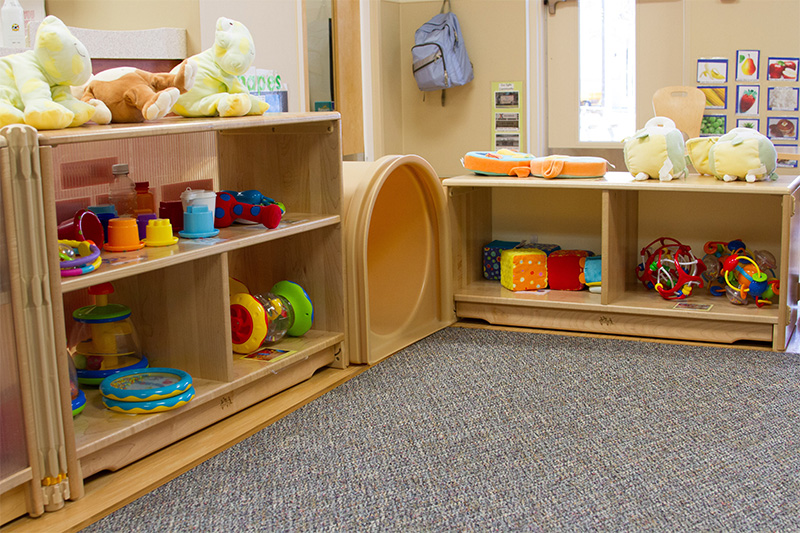 Infants use their senses to explore the world around them. The environment should be set up to encourage this exploration, but safety and supervision should be primary concerns. Infants can do a lot! As infants learn and grow, their needs change. After 6 months of age, children are ready to explore a bit more broadly.
Infants use their senses to explore the world around them. The environment should be set up to encourage this exploration, but safety and supervision should be primary concerns. Infants can do a lot! As infants learn and grow, their needs change. After 6 months of age, children are ready to explore a bit more broadly.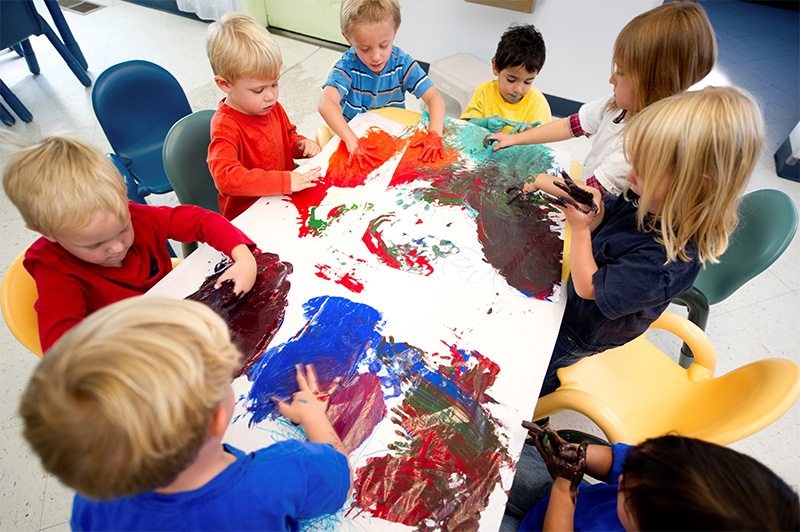 Toddlers are also explorers, but their new mobility has broadened the world of exploration possibilities. Toddlers take risks and test their own limits. The environment should maintain safety while allowing toddlers to practice their new independence.
Toddlers are also explorers, but their new mobility has broadened the world of exploration possibilities. Toddlers take risks and test their own limits. The environment should maintain safety while allowing toddlers to practice their new independence.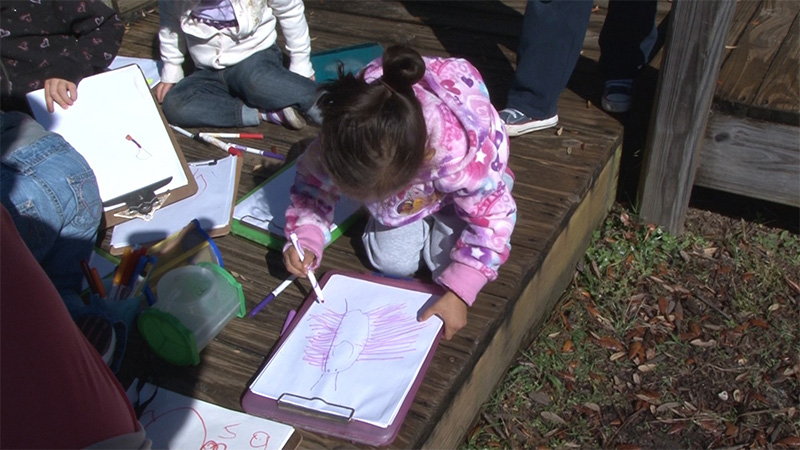 Preschoolers are making sense of the world around them. They are able to explore more independently, and they can move confidently and quickly. They need a variety of objects and settings to explore, manipulate, and create. The environment should spark their creativity, but it should also help them practice important independent skills, such as hand washing and dressing.
Preschoolers are making sense of the world around them. They are able to explore more independently, and they can move confidently and quickly. They need a variety of objects and settings to explore, manipulate, and create. The environment should spark their creativity, but it should also help them practice important independent skills, such as hand washing and dressing.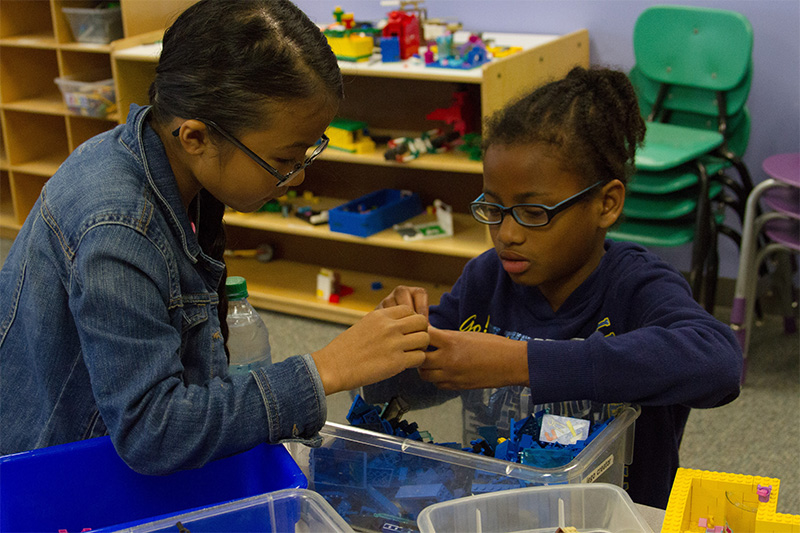 School-age children need many of the same experiences as preschoolers, but they are ready for more sophistication, independence, and challenge. The environment should allow them to identify peer groups, work alone or with others, and select materials and experiences that interest them.
School-age children need many of the same experiences as preschoolers, but they are ready for more sophistication, independence, and challenge. The environment should allow them to identify peer groups, work alone or with others, and select materials and experiences that interest them.
With trainers and coaches, you can emphasize the role the environment plays in the curriculum and in child behavior. Talk to staff members about how their environments are designed to support engagement and active learning. Also be prepared to encourage staff members to look at their environments first when challenging behaviors occur.
Supervise & Support
As the manager, you, along with trainers and coaches, are primarily responsible for the design, decoration and maintenance of your shared program spaces (e.g., entrance ways, hallways, staff break rooms, etc.). Just as staff members carry the responsibility of designing and maintaining their classroom environments and ensuring they are safe, you can model many positive environmental strategies by creating shared spaces that embody the qualities you want your classroom environments to express. For example, consider this in your shared spaces:
Although trainers and coaches will be primarily responsible for helping staff members think deeply about the environments they create and how they support the children in their care, you can model thoughtful practice for staff by sharing the questions you considered when building shared spaces, questions such as:
- What do I think this environment is communicating to children or youth, and families?
- What are my goals for this space?
- How do I think children, youth, or families should use this space?
- Is it easy to do what needs to be done here? Why or why not? What would make it easier?
You can also ask for staff feedback about your shared spaces. Gather their perspectives and make sure—especially for the spaces that mostly cater to them, such as staff break or resource rooms—that you are meeting their needs and goals. Also, just as some staff members must complete safety checklists for their spaces, be sure that you or one of the trainers or coaches regularly completes a safety checklist for shared spaces, such as entrance ways and hallways.
Use Tools
It is your responsibility to ensure that staff members provide high-quality, engaging environments. As with safety, your program may have tools to help evaluate the quality of indoor and outdoor environments. Several environmental rating scales are commercially available (e.g., ITERS-R, ECERS-R, SACERS). You can also use the National Association for the Education of Young Children environment standards or other tools developed for school-age programs. For trainers and coaches, these tools can provide valuable information to help focus a particular staff member’s professional development around the learning environments and materials they provide. For you as a Program Manager, it can be helpful to use these tools to look for patterns across classrooms or staff.
- If you see a classroom that is particularly strong in certain environmental practices, celebrate that classroom’s successes and encourage other staff members to learn from it. For example, you could arrange small tours of the classroom or ask staff members from that room to share their environmental choices at a staff meeting. You can cultivate a climate where staff members feel empowered to learn from one another about high-quality environments and where they feel supported to take on new risks and reflect on their practices.
- If you see particular patterns of deficiency, work with the trainers and coaches to make sure that relevant professional development is offered and develop a system to regularly follow up on those environmental aspects until a high standard is achieved and maintained. At staff meetings, you can share high-quality examples of particular environmental practices and remind staff how these environmental practices support the mission of your program and the messages you want to send to children, youth and families. Sometimes, staff may need help connecting the “nitty-gritty” on environmental checklists or scales to the bigger picture of how you all want to support children or youth in your program. Part of your role is to help make this clear; to empower staff to see the power beyond all their environmental choices.
- You must ensure that staff members, trainers, and coaches have the resources, including materials and training, to carry out the program’s expectations for high-quality environments. Perhaps you notice a consistent pattern across classrooms that the materials or books offered are gender-biased, consistently representing men or women in gender-stereotyped roles. This would suggest that acquiring more diverse and representative materials and books is necessary to support staff’s success in this aspect of the environment.
You will want to establish with your trainers or coaches a schedule regarding how frequently they or the staff should evaluate environmental spaces and how the findings of their evaluation should be documented and communicated to you and to staff. In addition, how should action that trainers or coaches take to support staff in building better learning environments be documented? You can refer to your program’s operating procedures or, if necessary, develop an appropriate system together. Make sure trainers or coaches understand your expectations regarding observation of learning environments and follow-up.
Part of your role as a Program Manager is to make sure the structural pieces that support high-quality environments are in place. This includes aspects of the physical environment that support strong supervision, for example:
- Does the physical facility have windows, half-walls, mirrors, etc. that help the staff maintain safe environments?
- Do you have the necessary furniture for staff to appropriately organize materials in their rooms for independence, engagement, and learning?
- Does the furniture available help staff members construct clear interest or activity areas and support clear pathways amongst areas?
With the help of trainers and coaches, you should have a system for regularly surveying the physical structure of your facility, and the furniture and materials available to your staff. Overseeing materials will be addressed in more detail in Lesson 4, but regarding the physical facility and furniture, you should:
- Have money allocated in your budget to cover the sometimes-large cost of facility repairs or furniture purchases.
- If facility repairs are not handled by a larger entity that oversees your program, make sure to get at least three competitive quotes for work that needs to be done and that the contractor or service repair facility understands the nature of your childcare setting or youth program.
- Have a long-term plan for when you will purchase larger items; for example, perhaps you plan that every-other year you will purchase one or two age-appropriate shelving-units, rotating older furniture out as needed.
- Purchase high-quality, durable furniture that can stand the wear and tear of multiple children and youth.
As discussed within the safety and healthy courses, you want to be sure that all program areas are safe, in working order, and sanitary. You must ensure that staff members are completing all necessary safety checklists. Have a system in place for documenting when staff members conduct safety checklists and for what staff should do if they notice concerns—staff members should understand safety items that require your immediate attention.
Ask Families
Sometimes, working many hours in an environment, we can have difficulty seeing an outsider’s perspective. To understand how well environments are working for children and families, you not only want to seek feedback from your staff, trainers, and coaches, but also from the families enrolled. When you ask families for feedback about your program, be sure to include some questions about the learning environment, including their child’s classroom, the outdoors spaces, and shared spaces such as entrance ways. You could consider include asking how much families agree with statements such as:
- The environment makes me feel like my child and family belong here.
- There are places where my child and I can have a moment to ourselves if we want to.
- I notice my child is able to do many things on his or her own in this program.
- I feel this is a safe space for my child to try out his or her ideas.
See
To help you think more about the learning environments you want to foster in your program, look briefly at some examples of learning environments developed for young children and school-age children and youth. Take some time to think about how these spaces affect learning.
Management: An Introduction To Learning Environments
Provide Resources
All of us need the right tools to do our jobs. Work with trainers and coaches connect staff members with resources they need. While trainers and coaches will likely work directly with staff to model a skill, arrange for them to observe in another classroom or program, share materials from a lending library, or brainstorm new ways to arrange a space. Your job is to make sure that the trainers and coaches have access to all that they need to support their work. You can also help reinforce trainers’ and coaches’ messages as you move through your program. For example, taking a moment to recognize a staff member’s new room arrangement, or comment on their incorporation of family photos, sends a powerful message about how much you appreciate their attention to the learning environment.
A variety of commercial vendors offer free sample classroom blueprints—the company that sells your program’s furniture may have resources you can find online. This can be an easy way for trainers, coaches, and staff to work together on designing or redesigning their classrooms.
You can also help connect staff members with resources about teaming or working with each other to solve problems. The University of Minnesota REACH program (https://reachfamilies.umn.edu/) has a variety of resources for developing your coaching skills and helping support adult learners. Teams can use the Classroom Collaboration Workstyle Discussion Guide from the National Center for Pyramid Model Innovations (NCPMI) to support communication (https://challengingbehavior.org/docs/Classroom-Collaboration-Workstyle-Disc-Guide.pdf).
Completing this Course
For more information on what to expect in this course and a list of the accompanying Learn, Explore and Apply resources and activities offered throughout the lessons, visit the Management Learning Environments Course Guide To support the professional development of the direct care staff members or family child care providers you oversee, you can access their corresponding Course Guides:
Explore
Take some time to evaluate how your program’s environment supports learning. Download, print and complete the Utilizing The Environment To Support Learning activity to identify what supports are currently in place to support various concepts of learning, and come up with some additional supports that can be included in the future.
Apply
Ensuring that your program has a safe and engaging environment is an ongoing process. Use the Environment Best Practices Checklist as a reflection tool to evaluate your program spaces, giving particular attention to safety, accessibility and engagement. Your notes and observations can serve as a starting point for making necessary changes, or a progress-monitoring tool to keep track of efforts to maintain environments that reflect your program’s mission.
Glossary
Demonstrate
Meyer, L., & Catalino, T. (2016). DEC Recommended Practices Monograph Series No. 2: Environment.
National Center for Pyramid Model Innovations. (2021). Pyramid Model Practices Implementation Checklist. https://challengingbehavior.cbcs.usf.edu/docs/Pyramid-Practices-Checklist.pdfCurtis
D., & Carter, M. (2003). Designs for Living and Learning: Transforming early childhood environments. St. Paul, MN: Redleaf Press.
Creative Curriculum Solutions. (n.d.). Teaching Strategies. https://teachingstrategies.com/product/the-creative-curriculum-for-preschool/
Greenman, J. (2007). Caring Spaces, Learning Places: Children’s environments that work. Redmond, WA: Exchange Press, Inc.
Grisham-Brown, J., Hemmeter, M. L., & Pretti-Frontczak, K. (2005). Blended Practices for Teaching Young Children in Inclusive Settings. Baltimore, MD: Brookes Publishing Co.
Harms, T., Cryer, D., Clifford, R. M., & Yazejian, N. (2019). Family Child Care Environment Rating Scale (FCCERS-3). New York: Teachers College Press.
Harms, T., Cryer, D. & Clifford, R. M. (2014). Early Childhood Environment Rating Scale (ECERS-3). New York: Teachers College Press.
Harms, T., Cryer, D., Clifford, R. M., & Yazejian, N.. (2017). Infant/Toddler Environment Rating Scale (ITERS-3). New York: Teachers College Press.
Harms, T., Jacobs, E. V. & White, D. R. (2013). School-Age Care Environment Rating Scale Updated (SACERS). New York: Teachers College Press.
Hemmeter, M. L., Ostrosky, M, & Fox, L. (2021). Unpacking the Pyramid Model. Baltimore, MD: Brookes Publishing Co.
MMcWilliam, R. A., & Casey, A. M. (2007). Engagement of Every Child in the Preschool Classroom. Baltimore, MD: Brookes Publishing Co.
University of Minnesota REACH. (2020). Supporting Families through Research and Outreach. https://reachfamilies.umn.edu/


